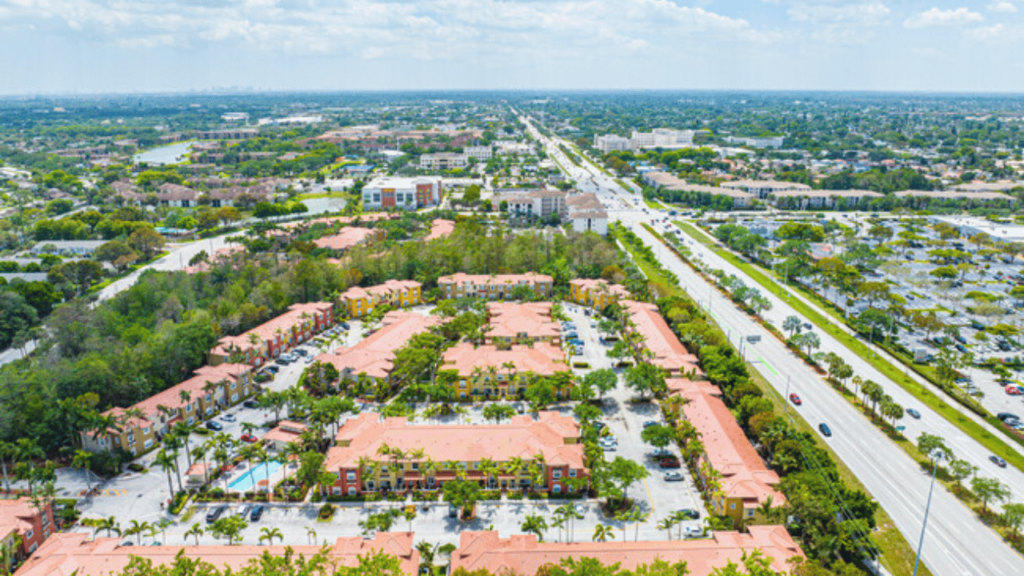The story of Historical Palm Beach Farms encapsulates a vivid chapter of Florida’s development, from sprawling citrus groves to the upscale residential area now known as Casabella Homes. This transition not only reflects changes in agricultural practices and urban development but also illustrates a broader economic and cultural evolution within the region.
Agricultural Beginnings and Early Settlers
Historical Palm Beach Farms initially thrived as an agricultural hub, where pioneers like Thomas Rickards and Frank Chesebro cultivated extensive citrus groves and diverse crops. These early settlers laid the groundwork for what would become a flourishing agricultural economy, driven by the farming of citrus, vegetables, and other fruits.
The Yamato Colony: A Cultural Imprint
One of the most notable aspects of the region’s agricultural history was the establishment of the Yamato Colony in the early 20th century. Founded by Japanese immigrants, the colony specialized initially in pineapple farming before shifting to other crops due to economic pressures and disease challenges. The colony’s contribution to local agriculture underscores the diverse cultural influences that shaped the region.
Economic Shifts: From Farms to Residential Development
As the 20th century progressed, the economic landscape began to shift. The fertile land of Historical Palm Beach Farms gradually attracted real estate developers and investors, transforming the area from an agricultural powerhouse to a coveted residential locale. This shift was marked by the development of Casabella Homes, a modern residential community that replaced the sprawling farms with luxurious homes, amenities, and landscaped gardens.
Preserving Historical Legacy
Despite profound transformations, the heritage of Historical Palm Beach Farms has not been forgotten. Efforts to preserve landmarks such as old farmhouses and barns have been integral in maintaining the historical narrative. These sites now serve as cultural touchstones for both residents and visitors, linking the past agricultural prosperity with the present-day residential.
Community and Sustainability in Modern Development
Today, Casabella Homes stands as a testament to thoughtful urban planning and community-oriented development. It offers residents a blend of luxury and convenience while emphasizing sustainability and green living practices. The community’s commitment to preserving green spaces and promoting eco-friendly building practices reflects a modern approach to development that respects the area’s historical roots.
Economic Contributions of Historical Palm Beach Farms
Historical Palm Beach Farms played a crucial role in the local economy through its agricultural output, which included not only citrus and vegetables but also specialized crops such as those grown by the Yamato Colony. These farms did more than just supply local markets; they connected the region to broader national markets. Farmers like Clint Moore, who owned the largest farm in the area, were pivotal in employing hundreds and shaping the agricultural landscape of Palm Beach County.
The Land Boom and Its Impact
The transformation of Historical Palm Beach Farms can also be attributed to the Florida land boom of the 1920s, which saw a massive influx of investors and speculators to the state. This period was marked by rapid land development and speculative real estate investments, which eventually led to the residential development of areas like Historical Palm Beach Farms. The boom brought infrastructure and a new population eager to capitalize on Florida’s growing appeal.
Cultural Shifts and Community Development
As Historical Palm Beach Farms transitioned into Casabella Homes, the area witnessed significant cultural shifts. The new community not only offered modern amenities but also became a melting pot of diverse cultures and backgrounds. This blend of historic charm and modern living has made Casabella Homes a unique example of how historical areas can adapt to contemporary needs while still celebrating their past.
Conclusion
The transformation of Historical Palm Beach Farms into Casabella Homes represents a significant chapter in Palm Beach County’s history. What once was a land dominated by citrus groves and diverse farming is now a thriving residential community that balances modern amenities with a respect for its agricultural past. This evolution reflects broader trends in economic development, cultural integration, and urban planning, making Historical Palm Beach Farms a unique and enduring piece of Florida’s history.
FAQs about Historical Palm Beach Farms
What were the main crops grown in Historical Palm Beach Farms?
Historical Palm Beach Farms was renowned for its extensive citrus groves and diverse agricultural activities, including vegetables and pineapples.
Who were the Yamato colonists, and what was their impact on the region?
The Yamato Colony was a group of Japanese immigrants who settled in the area in the early 1900s, initially focusing on pineapple farming before transitioning to other crops, significantly influencing local agriculture.
How did Historical Palm Beach Farms transition from agriculture to residential development?
The transition occurred gradually as the value of the land increased and demand for residential space grew, leading to the development of the Casabella Homes community.
What efforts have been made to preserve the historical legacy of Historical Palm Beach Farms?
Efforts include preserving historical landmarks such as old farmhouses and barns, which have been integrated into the modern landscape to maintain a connection to the area’s agricultural past.
What sustainable practices are incorporated in the modern development of Casabella Homes?
Casabella Homes focuses on sustainability through eco-friendly building materials, energy-efficient systems, and the preservation of green spaces, reflecting a commitment to environmentally responsible development.
YOU MAY LIKE ALSO: Red Robin Mud Pie Kopy Kat Recipe: How to Recreate This Beloved Dessert at Home

